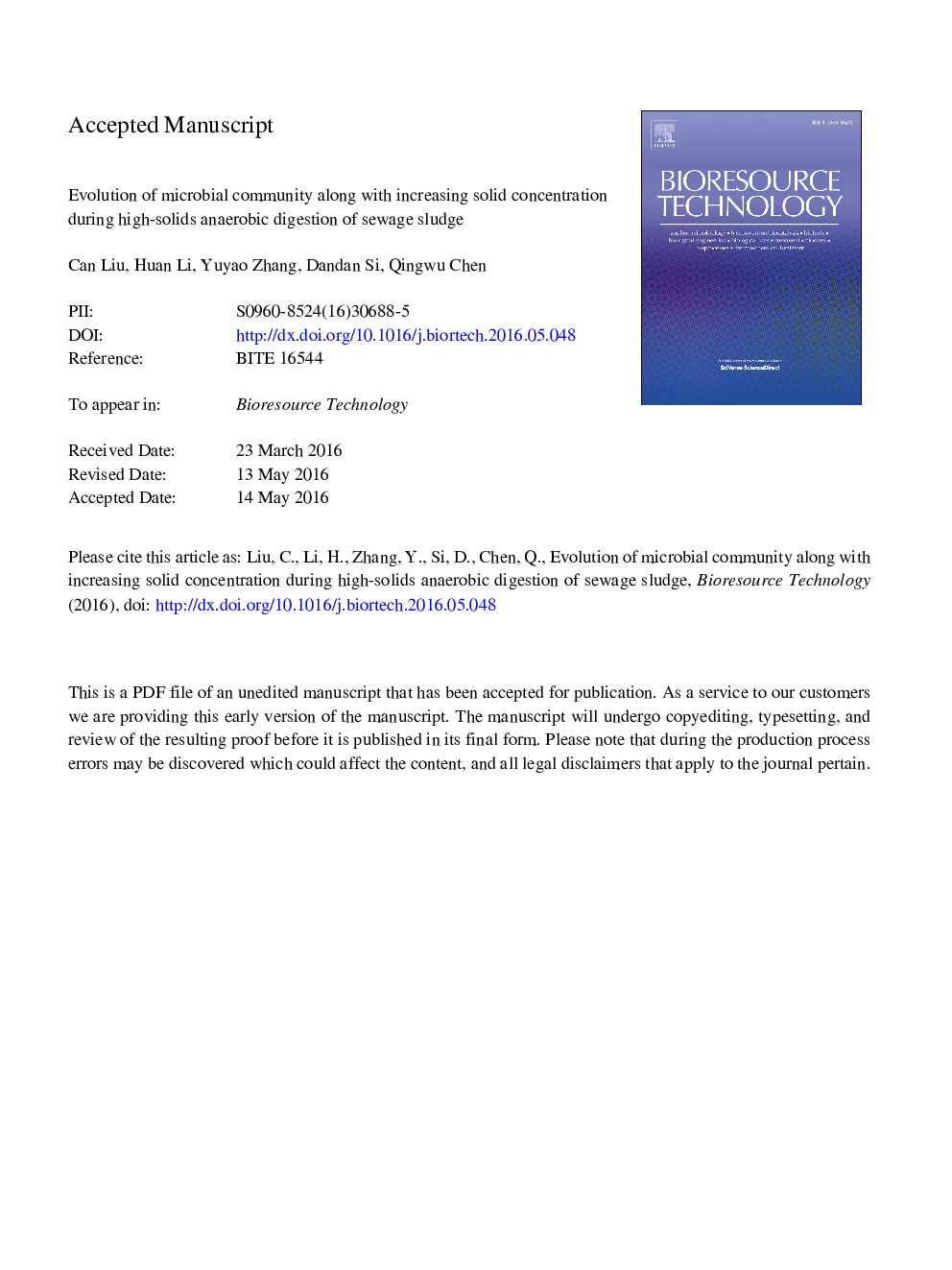| کد مقاله | کد نشریه | سال انتشار | مقاله انگلیسی | نسخه تمام متن |
|---|---|---|---|---|
| 7070565 | 1459927 | 2016 | 37 صفحه PDF | دانلود رایگان |
عنوان انگلیسی مقاله ISI
Evolution of microbial community along with increasing solid concentration during high-solids anaerobic digestion of sewage sludge
ترجمه فارسی عنوان
تکامل جامعه میکروبی همراه با افزایش غلظت جامد در هضم بی هوازی با انجماد زیاد از لجن فاضلاب
دانلود مقاله + سفارش ترجمه
دانلود مقاله ISI انگلیسی
رایگان برای ایرانیان
کلمات کلیدی
هضم بی هوازی لجن فاضلاب، غلظت جامد، جامعه میکروبی،
موضوعات مرتبط
مهندسی و علوم پایه
مهندسی شیمی
تکنولوژی و شیمی فرآیندی
چکیده انگلیسی
High-solids anaerobic digestion (HSAD), a promising method with smaller reactor and less heating energy consumption, showed relatively lower digestion efficiency sometimes and higher tolerance to some inhibitors. To investigate the phenomena, the archaeal and bacterial communities in four anaerobic digesters treating sewage sludge with total solids (TS) of 10-19% were investigated. Although acetoclastic methanogenesis conducted mainly by genus Methanosarcina was still the main pathway producing methane, the total ratio of acetoclastic methanogens decreased along with the increased TS. In contrary, the relative abundance of hydrogenotrophic methanogens increased from 6.8% at TS 10% to 22.3% at TS 19%, and methylotrophic methanogens from 10.4% to 20.9%. The bacterial community was dominated by five phyla. Acidogenic and acetogenic bacteria affiliated to Firmicutes decreased following the increase of TS; while the proteolysis phylum Bacteroidetes increased, with a tolerant family ST-12K33 notably existing in the digesters at TS 17% and 19%.
ناشر
Database: Elsevier - ScienceDirect (ساینس دایرکت)
Journal: Bioresource Technology - Volume 216, September 2016, Pages 87-94
Journal: Bioresource Technology - Volume 216, September 2016, Pages 87-94
نویسندگان
Can Liu, Huan Li, Yuyao Zhang, Dandan Si, Qingwu Chen,
